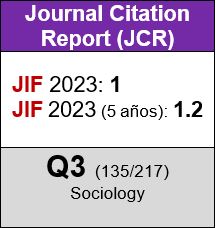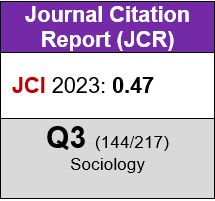¿Hacia una ciudad dual? suburbanización y centralización en las principales ciudades españolas
DOI:
https://doi.org/10.5477/cis/reis.176.35Palabras clave:
Áreas metropolitanas, gentrificación, centralización, segregación urbana, suburbanización, suburbanización de la pobrezaResumen
Las principales metrópolis están siendo transformadas por diferentes procesos migratorios, económicos y también, de manera relevante, por la movilidad residencial. Este trabajo se centra en esta última, analizando los perfiles de los participantes en los movimientos de centralización y suburbanización en Madrid, Barcelona, Valencia, Sevilla y Bilbao, a partir de los datos del censo de 2011. Utilizando modelos de regresión logística binomial, se ha constatado la mayor tendencia a buscar los centros urbanos de las clases medias, con estudios y en hogares no convencionales, frente a una creciente suburbanización de jóvenes, de clase trabajadora y embarcados en proyectos familiares. La combinación de ambos movimientos (que tratados individualmente podrían considerarse avances en la convivencia social) ocasiona un incremento de la segregación urbana, pero ahora a escala metropolitana.
Descargas
Descargas
Publicado
Cómo citar
Número
Sección
Licencia
Derechos de autor 2024 Revista Española de Investigaciones Sociológicas

Esta obra está bajo una licencia internacional Creative Commons Atribución-CompartirIgual 4.0.
Permite Compartir — copiar y redistribuir el material en cualquier medio o formato, Adaptar — remezclar, transformar y construir a partir del material para cualquier propósito, incluso comercialmente.








